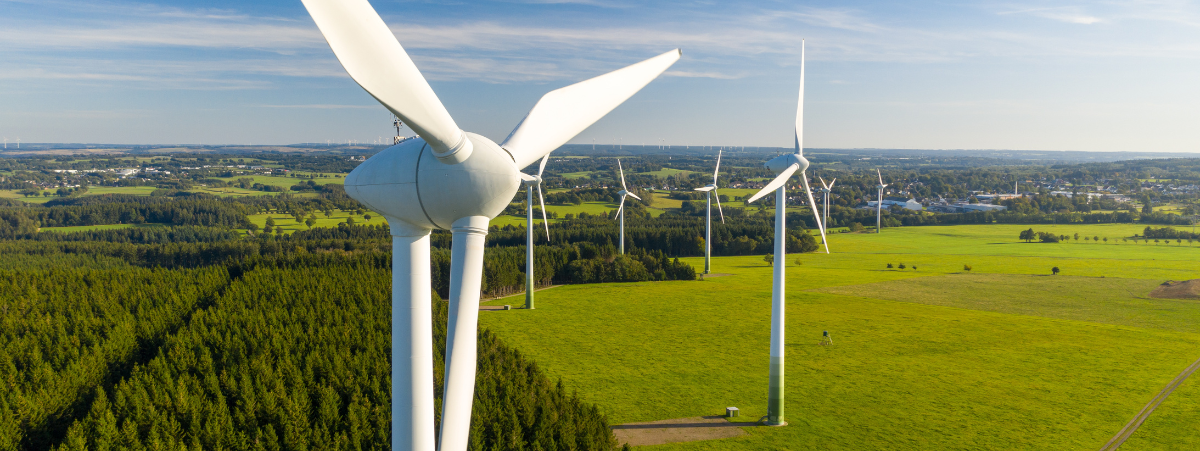Biodiversity credits are the latest tool in the climate action arsenal – but how do they work and what is their role in relation to the carbon market?
Biodiversity protection and restoration is one of the key topics at COP27 in Sharm el-Sheikh, and for good reason. Ahead of the UN Climate Change Conference, WWF revealed the catastrophic effect of human activity on biodiversity: according to the Living Planet Report 2022, wildlife populations shrank by an average of 69% between 1970 and 2018.
How is climate change affecting biodiversity?
Climate change has been identified as one of the most significant threats to biodiversity in recent years. Rising temperatures, changing rainfall patterns, and increased frequency and intensity of extreme weather events such as hurricanes, droughts, and wildfires are already having a significant impact on global ecosystems and the species that inhabit them. Some of the effects of climate change on biodiversity include:
Range shifts: species that move to cooler climates as their current habitats have become too warm for them, leading to animal extinctions if they cannot adapt to new habitats.
Alterations in migration patterns: Climate change is affecting the timing of seasonal events such as flowering, bird migration, and insect emergence. This can disrupt the delicate balance of ecological interactions and result in cascading effects throughout the food chain.
Coral bleaching: Warming ocean temperatures have resulted in widespread coral bleaching, where the colorful algae that live in the coral are expelled, causing the coral to turn white and ultimately die.
Changes in phenology: The timing of seasonal events, such as when plants flower and when insects emerge, is shifting due to climate change. This can result in mismatches between species that rely on each other, such as pollinators and the plants they pollinate.
Why is biodiversity essential for limiting climate change?
Climate change is having a profound impact on biodiversity, and we need to implement strategies to address this urgent global challenge. Reducing greenhouse gas emissions are essential in protecting the planet’s ecosystems and the species that rely on them.
If the loss of animal and plant life was not tragic enough, this level of biodiversity loss is hindering our efforts to curb climate change: biodiverse ecosystems like forests, peatlands and oceans are natural carbon sinks, and their efficiency is now at risk.
What are biodiversity credits?
Voluntary biodiversity credits, including the ones developed by Terrasos and ClimateTrade in May and recently recognized by the World Economic Forum, are economic units representing specific actions for biodiversity protection and restoration. In the case of Terrasos, the credits were generated from the Bosque de Niebla-El Globo Habitat Bank in Colombia, with the support of XM, IDB Lab and Partnership for Forest, with each unit representing 10 square meters of land protected for 30 years.
Biodiversity credits are typically created through a certification process that verifies the environmental benefits of the conservation or restoration activities. These credits can then be sold on a market to other developers who need to offset the environmental impacts of their own projects.
Biodiversity credits – a new way of funding nature protection
The role of biodiversity credits was discussed this week during a World Climate Summit panel on carbon offset markets and their role for biodiversity, held in Egypt alongside COP27. As one of the panel speakers, ClimateTrade CEO Francisco Benedito explained that biodiversity credits are set to allow companies, individuals and governments to go beyond carbon neutrality and become “nature-positive”.
“As a former banker I was always worried about how to fund sustainable projects for people without collateral. In a renewable energy project, the collateral is the energy that is set to be produced, for instance. But for biodiversity protection projects there is no collateral. This type of unit – biodiversity credits – is a new way of funding nature protection. Because we need to put money to work to avoid further species extinction,” he noted.
Beyond the limitations of carbon markets
David Antonioli, CEO of Verra and the panel’s moderator, pointed out that as carbon markets have evolved, their limitations have become clearer. “For instance, to make the REDD+ (reduction of emissions from deforestation and forest degradation) work, you need a plausible imminent threat for the forest, that’s the rationale for providing carbon credits. As you get further away from those threats, these projects still provide sustainable livelihoods but because they’re not located where the threat is, they find it difficult to receive carbon finance,” he said, suggesting that biodiversity credits may be able to fill that gap.
Verra itself has started to develop a framework around biodiversity credits to ensure that these units can become complementary to the carbon market.
Carlijn Nouwen, Co-Founder of the Climate Action Platform for Africa, gave the example of Gabon, a country with very low deforestation rates that cannot access REDD+ creditsm but is looking to monetize the protection of its biodiverse forest. She also emphasized the need to ensure fair compensation for ecosystem services such as biodiversity conservation in the development of these credits: “As we look at paying for biodiversity and ecosystem service credits, we want to make sure we go over and above the financial recognition of carbon credits. We need to innovate with integrity and hold those two things in the right balance to make sure we get equitable compensation for all ecosystem services.”
Regulation and education to push demand
When it comes to the sources of demand for biodiversity credits, regulation and education are pushing more and more companies towards this offering.” We know about the Task Force on Nature-related Financial Disclosures, 40% of which is about biodiversity. This is one example of how regulation and education are pushing more and more companies to care. People are starting to see that the biggest climate threat is around biodiversity loss. In fact, in this COP I have seen more people than ever trying to get involved in biodiversity conservation,” said Benedito.
As to when the biodiversity credit market will reach the maturity of the carbon market, ClimateTrade’s CEO believes it will not take more than four years, while Nouwen finds it hard to predict. “It depends on what will underpin the demand, like regulation, education, cost of living, as well as whether we can get to a set of metrics and mechanisms that allows investors to put together a portfolio and compare projects,” she noted.







